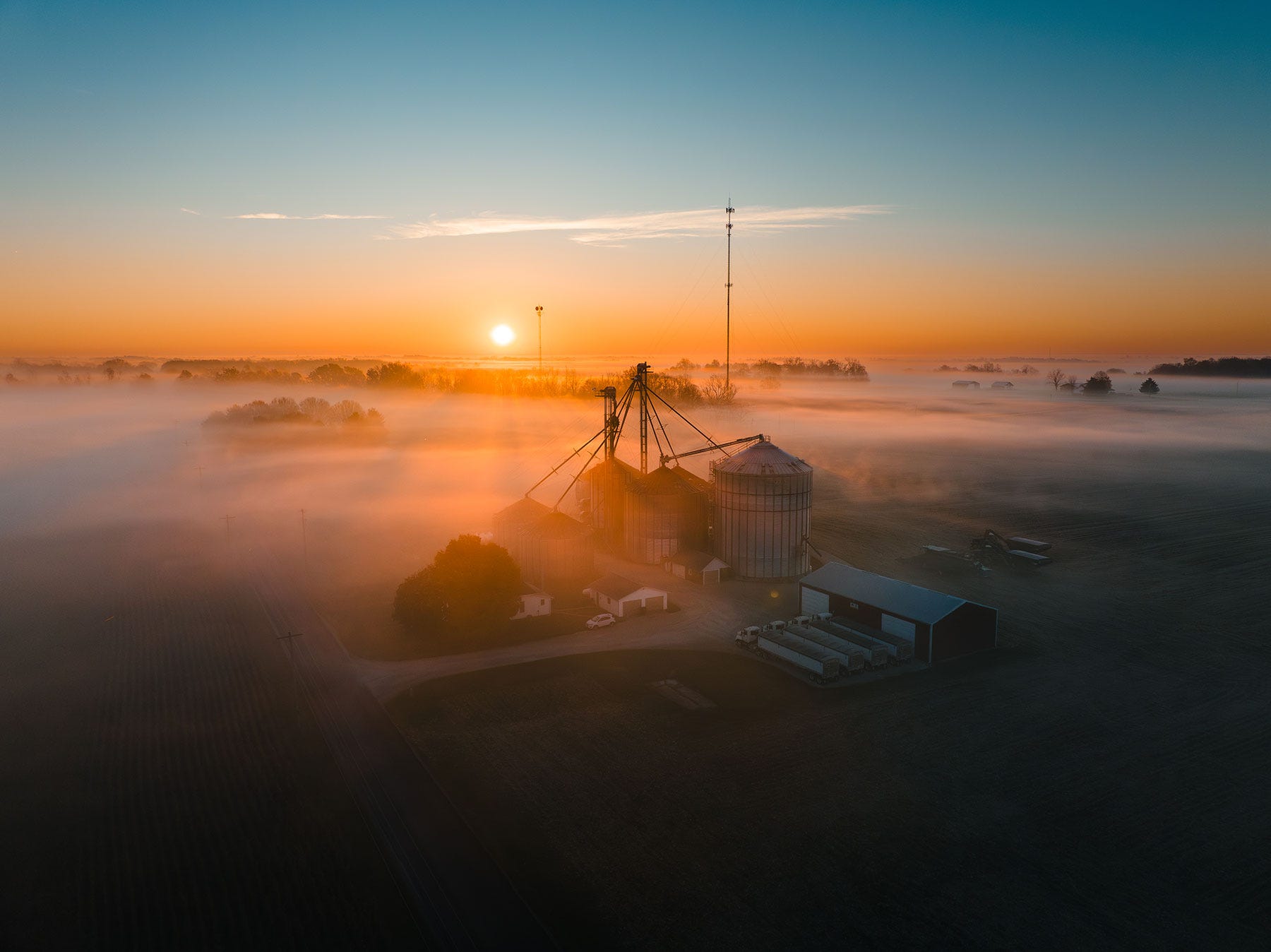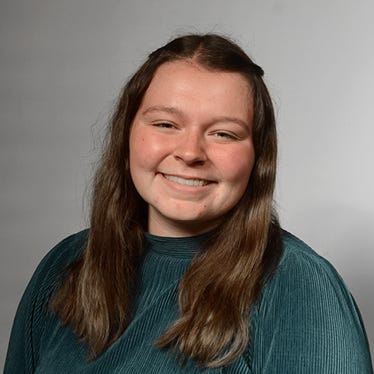February 12, 2024

When Noah Poynter, Putnam County, Ind., got his first drone in 2015, he could not have imagined he’d be creating top-notch promotional videos for companies such as New Holland and Cargill.
Fast-forward to today, and Poynter has carved himself a spot in the small but growing drone footage industry with his company, Noah Poynter Media. His start is one that many who have jumped headfirst into a new hobby will recognize.
“YouTube and any kind of online research helped,” Poynter says. “Anything I learned on the photo and video side came from online research.”
New territory
Poynter found that making connections while attending Purdue gave him the boost he needed to be recognized. In the beginning, his agricultural background was what set him apart when it came to attracting agricultural companies. Poynter grew up on his family’s farm in Putnam County and keeps the operation as his top priority.
“When I went out to film a wheat harvest, they wanted me to get in the combine and interview the farmer on the equipment they were running,” Poynter says. “Not very many people feel comfortable jumping up in a combine to do stuff like that.”
The turning point for Poynter’s drone hobby was when Fast Manufacturing liked a video he made featuring their sidedressing toolbar. The company wanted to use the footage, but Poynter could not legally sell the footage until he got his drone license, which he immediately pursued.
The production process
Poynter compiles his work in an online portfolio through his website, and companies approach him with a vision for promotional materials. Some companies dream up the entire video and have Poynter make it a reality while others give him free rein.
“A lot of the time, I enjoy when they have a vision, which seems kind of backward,” Poynter says. “And then I can bring that to life.”
Some of Poynter’s projects require him to do a little shaping to point people in the right direction, but most projects have a direct focus. He notes that promotional videos and photos seem to have the highest demand.
“It isn’t always just promoting equipment,” Poynter adds. “I did one with Co-Alliance that I enjoyed that was a brand campaign type of video. They have the tagline ‘We deliver.’ I made a video with them to help launch that campaign.”
Full-time work
Poynter notes that a challenge with operating this business is that it can be difficult to mesh with full-time farming. This is mostly because companies like to have videos of planting and harvest, which are hard to step away from on Poynter’s own farm.
“Wheat harvest was the one time I could get away,” Poynter says. “We don’t grow any wheat, so that worked out pretty well. But that’s always been a struggle. I’m sure a lot of companies would like me to work in harvest, but I just can’t get away.”

WHERE IT STARTED: Noah Poynter’s drone hobby and business started right here on his family farm in Putnam County, Ind. The farm remains a priority in his life.
He also explains that it’s difficult to find the time to sit down and edit his raw footage.
While the farm remains a priority for Poynter, he values the videos he makes and would like to continue setting time aside for projects. For now, he continues to answer the call for other promotional deals, such as for a yearly local music festival, and hopes to keep making clients’ visions a reality.
Get started with right equipment
Poynter has narrowed down his favorite drones and equipment to a handful of tools he would recommend to those just getting started in this field.
Poynter uses two types of drones to capture photos and videos; they are camera drones and first-person view (FPV) drones. The camera drone he uses is a DJI Mavic 3 Pro. He swears by this drone because it has zoom lenses that allow the operator to get closer footage of subjects. Most camera drones, like the DJI Mavic drones, come with the camera integrated with the drone.
Poynter uses a variety of FPV drones, which are not as common. The operator wears a headset to navigate these drones. They are quicker and more agile, allowing them to squeeze into tight spaces. This type of drone has allowed Poynter to capture indoor tours of buildings for promotional videos with Purdue.
Poynter also uses Sony cameras to capture footage from the ground. Additionally, he uses Final Cut Pro for editing videos and Adobe Lightroom for editing pictures.
Read more about:
DronesAbout the Author(s)
You May Also Like






